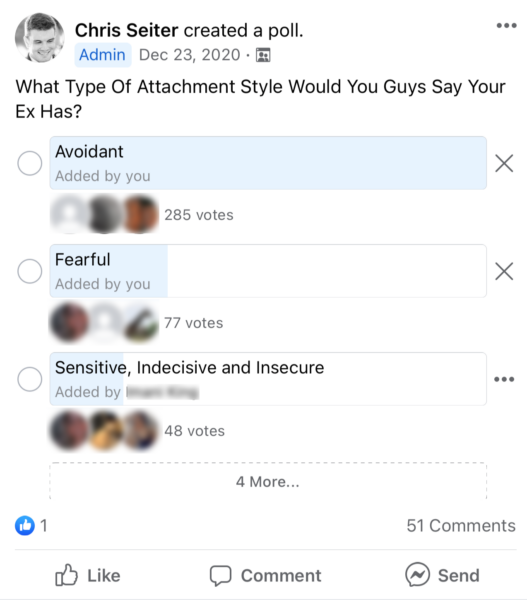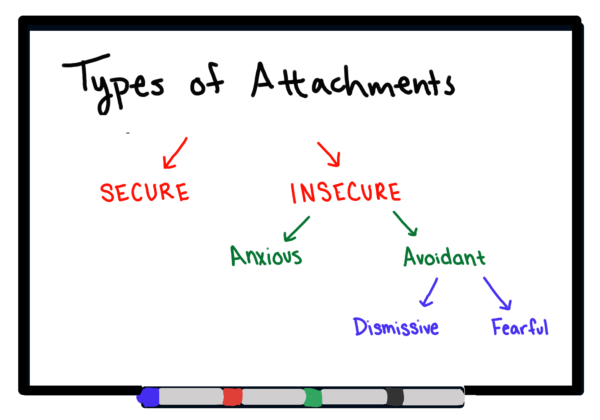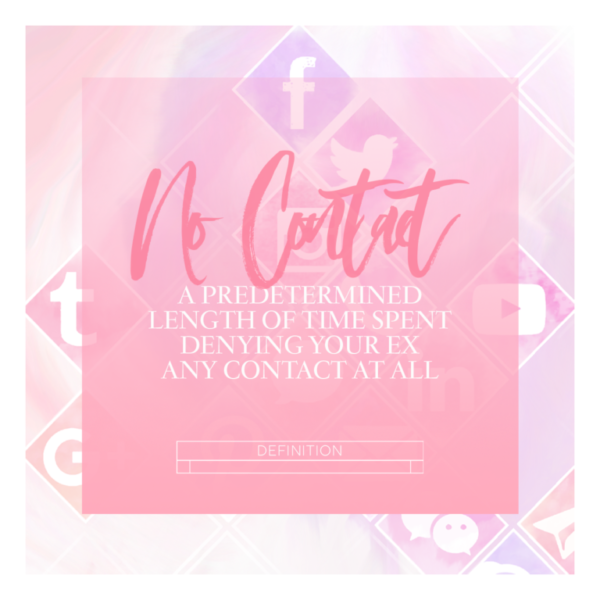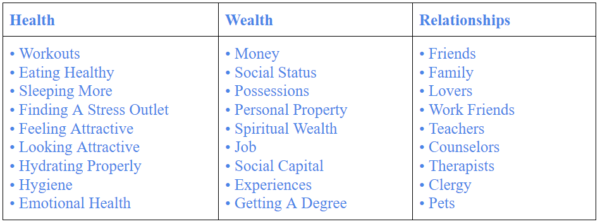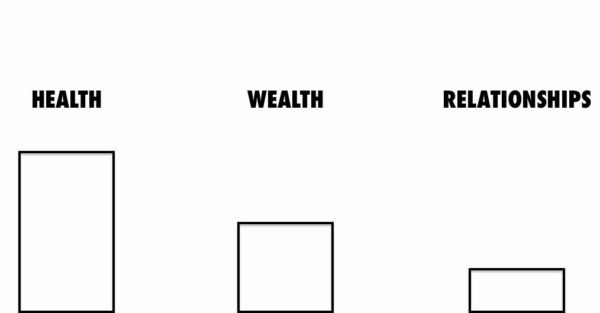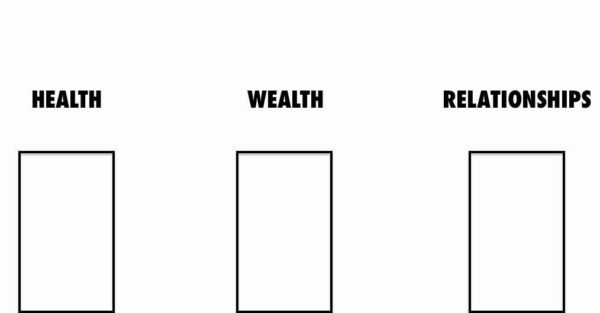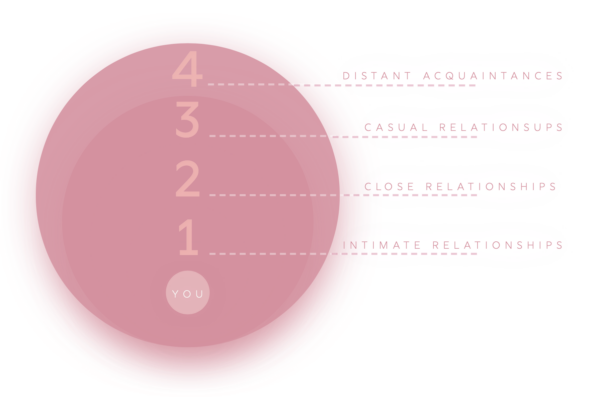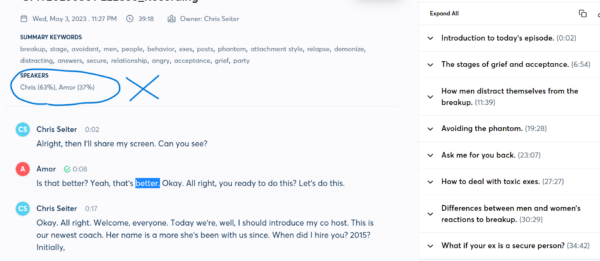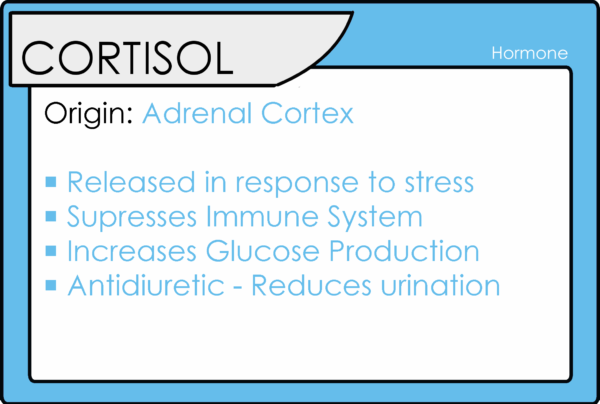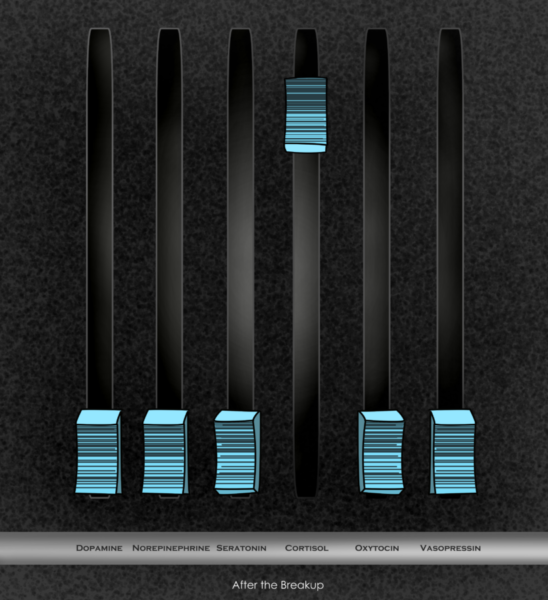Here’s the thing that most people never really think or talk about:
The strategy for winning back the love of your life and moving on from them is actually the same.
We get bombarded with this question all the time: “The love of my life left me. What should I do?”
In the past, we used to ask our clients, “Well, what do you really want? Do you want them back or do you want to move on?”
We don’t need to ask that anymore because the best approach is twofold. You literally need to take the same steps in the post-breakup period, whether you want them back or if you want to get over them.
So today I’m going to take you through the six essential elements you need to understand if you’ve been dumped by the love of your life,
- The Avoidant Mentality
- Implementing A No Contact Rule (And Not Giving In To The Fad)
- Seeking Social Support
- Getting Professional Help
- Employing The Breakup Triad Strategy
- Making Your Ultimate Decision
Let’s start from the top.

What Are Your Chances of Getting Your Ex Boyfriend Back?
Take the quizElement #1: The Avoidant Mentality
Our internal polls have suggested that the majority of our clients’ exes possess an avoidant attachment style.
In case you’re not familiar with what that means, I’ve made plenty of resources for you to delve into. But let me give you a crash course version.
Attachment styles can generally be categorized into four main types:
- secure
- avoidant
- anxious
- fearful.
Here’s where it gets interesting: these four styles can be divided into two categories – secure attachments and insecure attachments.
The ultimate goal of any attachment theory is to transform someone with an insecure attachment into a more secure individual over time. Now, secure attachments don’t usually have deep-seated wounds that trigger them. However, insecure attachments do, and this is where things get complicated. Let’s break it down further.
Insecure Attachment Core Wounds:
- An avoidant insecure attachment is plagued by a core wound centered around a fear of losing independence. Anything that threatens their autonomy will trigger their flight mechanism. They’ll avoid the situation, break up with you, and engage in various other behaviors.
- An anxious individual carries a profound fear of abandonment as their core wound. So when they go through a breakup, that core wound is triggered, leading them to act desperate or even suffocate the relationship with constant demands for reassurance, driven by the constant fear of losing you.
- Now, let’s talk about the unicorns of attachment styles – the fearful avoidant individuals. They experience both core wounds intensely. One moment, they swing toward the anxious core wound, desiring independence, and the next moment, they swing to the anxious core wound of desiring intense closeness, fearing they’ll be left alone forever. It’s like they’re caught in a pendulum-like swing, back and forth, back and forth. Needless to say, it can be incredibly frustrating.
(Clarifying Information On Fearful Avoidants: They are often misclassified as having borderline personality disorder because of how extreme this pendulum shift is. According to The Attachment Project only 7% of the entire population has a fearful attachment style. Therefore if you play the numbers it’s unlikely your ex has this.)
Given that most of our exes have a dismissive avoidant attachment style, here’s an interesting tidbit:
Avoidants usually don’t feel the urge to “come back” until they sense that you’ve moved on.
And it makes sense, doesn’t it? Once an avoidant regains their independence, takes some time apart, and starts reminiscing about the past relationship, they slowly begin inching back toward you.
So, regardless of your goals, the best approach involves finding healthy ways to cope with the pain you’re currently experiencing because you have the knowledge that doing so can actually increase the odds of having the love of your life come back.
Element #2: Implementing A No Contact Rule (Not Giving In To The Fad Of It)
I’ve discussed the No Contact rule on this website, almost to the point of overkill on this website.
If you don’t know what it is then here’s our official definition,
The no contact rule refers to a period of time where you cut off all conceivable communication with an ex after a breakup. The intent of this tactic should NOT be used to make your ex miss you but instead should be used to rebuild your own life so that you outgrow your ex. By doing this, the no contact rule can have the added benefit of making an ex miss you.
And if that’s not enough here’s a fun little graphic,

What Are Your Chances of Getting Your Ex Boyfriend Back?
Take the quizI want to emphasize that you shouldn’t fall into the trap of thinking that the No Contact rule alone will magically make your ex come back.
Many times, when you search for success stories online, including this very website, you might be tempted to believe that all you need to do is apply the No Contact rule, ignore your ex for a certain number of days, and they’ll come running back, missing you like crazy.
But let me tell you, that’s usually the exception to the rule.
In fact, what we’ve discovered is that the common thread among most of our success stories is that they use the No Contact period to engage in what we call Trinity work.
Now, the Trinity work is a concept I came up with, aimed at helping you heal after a breakup while simultaneously becoming a person that others envy.
Here’s how it works:
You divide your life into three distinct categories – health, wealth, and relationships.
And then you work on finding a balance within each of those categories. The key is to understand their interconnected nature. It’s synergistic. When one goes up the others can go up. Alternatively, when one goes down, the others can go down.
For example,
When you go through a breakup, it’s natural for the relationship category to take a hit.
The mistake many people make during this time is allowing the negative impact on their relationship to spill over into the other categories. They become depressed, neglect their health and well-being, perform poorly at work, and it creates a downward spiral.
But here’s the exciting part about the Trinity concept: You can rebuild it by working on the interconnected areas.
So, when you find yourself searching online, trying to cope with the departure of the love of your life, the best way to improve the relationship category (where your ex undoubtedly resides) is to focus on your health or wealth first. Once you gain confidence in those areas, the relationship category starts to repair itself.
Through interviews with our successful clients, we’ve found that when they implement the No Contact rule while placing an intense focus on Trinity work and restoring balance to the Holy Trinity, they tend to achieve better results.
Want proof?
This is lee! She got her ex back and credits the immense mindset shift she had during the no contact rule (trinity work) as the reason. Of course, by the time she had gotten him back she decided that she didn’t want him anymore.
Remember, it’s not just about going radio silent. It’s about using that time to work on yourself, both physically and emotionally, and creating a life that others will admire.

What Are Your Chances of Getting Your Ex Boyfriend Back?
Take the quizThat’s the path to reclaiming your love life.
Element #3: Seeking Social Support
Here at Ex-Boyfriend Recovery, we have a concept called the Sphere of Influence.
It revolves around the people you surround yourself with and ensuring that they genuinely contribute to your life in a positive way. Well, at least that’s supposed to be how it works.
The Sphere of Influence consists of individuals whose opinions truly matter to you.
These are usually friends and family members, not distant acquaintances or mere acquaintances in general. If you refer to the graphic above the closer you get to that little “you” circle the more powerful that particular member is in the SOI.
The key here is paying attention to your own personal Sphere of Influence, and sometimes that means making difficult decisions like potentially removing a friend if they aren’t adding any value to your life.
Lately I’ve been trying to explore ways to incorporate AI into my business.
There’s definitely some applications but none more relevant than a transcription service called otter.ai.
(No, this isn’t a pitch for them, but it’s worth mentioning.)
Otter.ai utilizes AI to transcribe conversations.
When I use it to interview success stories, for instance, it provides a percentage breakdown of who spoke the most. This feature allows me to analyze ratios in conversations and apply a similar mental calculus to my own life and Sphere of Influence. By looking at pure percentages, you can gauge who truly listens to you.
For example, in this interview I talked WAY too much,
Ideally, you want a 50-50 split—people who listen and offer valuable advice.
In the example provided above I talked close to 63% of the conversation which indicates I’m making the conversation more about me. Good members of your sphere of influence will be closer to that 50/50 line.
There’s one other impactful way I know of to find support, joining a community.
If you feel like your Sphere of Influence is lacking, becoming part of a community, like ours, can make a huge difference. Surrounding yourself with like-minded individuals who hold you accountable, listen to your thoughts, provide support, and allow you to gain perspective is invaluable. As they say, misery loves company.
Interestingly, when our community members join, they often believe their situation is the worst imaginable. However, witnessing others going through similar or even more challenging experiences helps put their own situation into perspective.
It doesn’t necessarily make them feel better, but it offers the perspective needed to navigate something like the No Contact rule and seek support from the right sources.
Element #4: Seek Professional Help
Now, as cliché as this may sound, consider hiring a therapist.

What Are Your Chances of Getting Your Ex Boyfriend Back?
Take the quizI delved into some research because it’s one thing to state that people who seek therapy tend to benefit more in life compared to those who don’t. However, making such a blanket statement without any research to support it would be irresponsible.
So, I went on a quest for information and stumbled upon an article by the American Psychiatric Association.
This article covers everything from the concept of therapy to how to find and choose a therapist, the various types of psychotherapy, the potential need for medication, and what therapy sessions entail.
Blah, blah, blah.
The real important part of the article was an citation I stumbled across.
According to the American Psychiatric Association, 75% of individuals who engage in psychotherapy experience some level of benefit.
Now, this ties in closely with the last step, which emphasizes seeking social support from your Sphere of Influence and a trusted community.
However, if you find that these avenues aren’t providing sufficient assistance, especially if you’re truly struggling with the breakup, taking the next step of getting professional help by hiring a therapist is highly recommended. While I don’t have specific recommendations at the moment, that decision is up to you.
Just bear in mind that there is a 75% chance of experiencing some form of benefit when entering psychotherapy.
It might be worth considering as 75% is a very big number.
Element #5: Employ The Breakup Triad Strategy
Step five introduces a new concept I’ve never talked about before called the Breakup Triad Strategy.
This strategy is derived directly from scientific research. Specifically a paper titled, “The Down Regulation of Love Feelings after a Romantic Breakup: Self-report and Electrophysiological Data.”
(Try saying that three times fast.)
The researchers aimed to test cognitive strategies that could help individuals recover from a breakup.
They selected 24 heartbroken individuals who had recently experienced a breakup and tested three strategies on them.
Triad #1: Negatively Reappraising The Ex
The first strategy involved negatively reappraising the ex, focusing on their negative qualities. Participants were asked to identify and articulate the negative traits of their ex.
Triad #2: Love Reappraisal
The second strategy was love reappraisal, which entailed accepting feelings of love without judgment. This aspect, acceptance of one’s circumstances, is often a struggle for many of our clients.
The name of our website, Ex-Boyfriend Recovery, itself implies that people are not content with their current situation, whether they desire to reconcile with their ex or move on.
In the study, after participants engaged in the negative reappraisal exercise, they were encouraged to accept their circumstances. Not everyone succeeded in accepting their situation, but some did.
Triad #3: Distraction
The third strategy, distraction, was particularly interesting. Participants were instructed to think about positive things unrelated to their ex.
The researchers discovered that all three strategies significantly reduced participants’ emotional response to photos of their exes. They conducted brain scans while showing participants photos of their exes after they had engaged in the strategies, and the results showed a positive impact.
Which Of The Strategies Is Best To Use?
However, not all strategies had equal effects.
Distraction was the most impactful in terms of making people feel better overall, but it did not influence their level of love for their ex. On the other hand, the negative reappraisal strategy not only made participants feel better overall but also decreased their feelings of love toward their ex.
So, what does this tell us?
If you want to experience an overall improvement in your emotional state, you should find ways to distract yourself.
If your goal is not only to feel better but also to reduce your feelings of love for your ex, it is beneficial to acknowledge and highlight their negative aspects.
My take?
Employ a comprehensive approach that includes all three strategies: identifying negative qualities, engaging in distractions, and accepting your circumstances.
In other words, throw the kitchen sink.
The researchers emphasize that these findings are particularly relevant in the age of social media, where frequent exposure to photos of exes and resulting feelings of love may occur.
This is relevant to some of my more recent research revolving around cortisol,
Cortisol, a stress hormone, skyrockets after a breakup,
I mean, it really skyrockets.
And the crazy part is it can remain elevated for up to six months if it stays in this elevated state for a long time. To give you a basic frame of reference, normally cortisol can return back to normal after a few hours.
Therefore, coping with and recovering from a breakup involves finding successful methods to gradually lower cortisol levels.
Unfortunately, in the era of social media, constant exposure to photos and posts from exes can keep cortisol levels elevated, making the process of moving on even more challenging than before. Thankfully, the Breakup Triad Strategy offers a powerful means to gradually reduce cortisol levels and aid in the recovery process.
Element #6: Making Your Ultimate Decision
And that brings us to step six, which is making your ultimate decision.
Now, this may sound like a radical thought, but hear me out. Before reaching this step I believe you should withhold any definitive opinion on whether you should get your ex back or not.
Only after completing the previous five steps should you proceed to make your ultimate decision.
(Which we’ve given an entire “step” to.)
Here’s the intriguing part: we have found that individuals who are genuinely okay without their exes actually have a better chance of getting them back.
What’s fascinating is that I can easily make this argument based on the numerous interviews I’ve conducted. After all, I think what people who are maybe skeptical of this concept need is definitive proof.
Well, here it is,
And that’s just one interview I attached to this article. I can point to dozens of other cases where someone expressed being okay without their ex and eventually managed to win them back.
Throughout these cases, there is one consistent theme: getting over your ex appears to be one of the most effective approaches to rekindling a relationship.
Of course, there are tactical techniques and best practices that can be employed, but ultimately, you should not rush to a decision until you have reached a point where you are genuinely content without your ex.
That’s when you can confidently make your ultimate decision.
It’s the moment you realize, “You know what? I think I’m going to give it a try and work on getting my ex back.”
So, let go of any preconceived notions until you have completed the necessary steps and find yourself in a place where you are truly okay without your ex. That’s when you can make a well-informed choice about pursuing a reconciliation.
